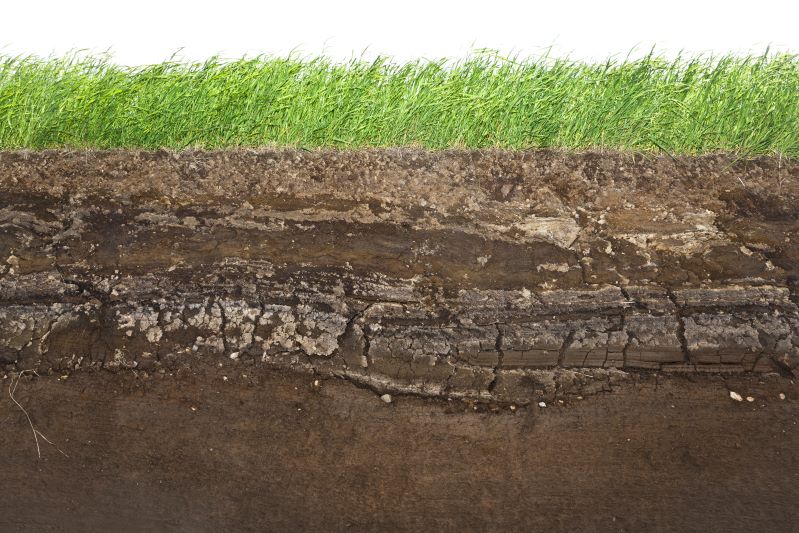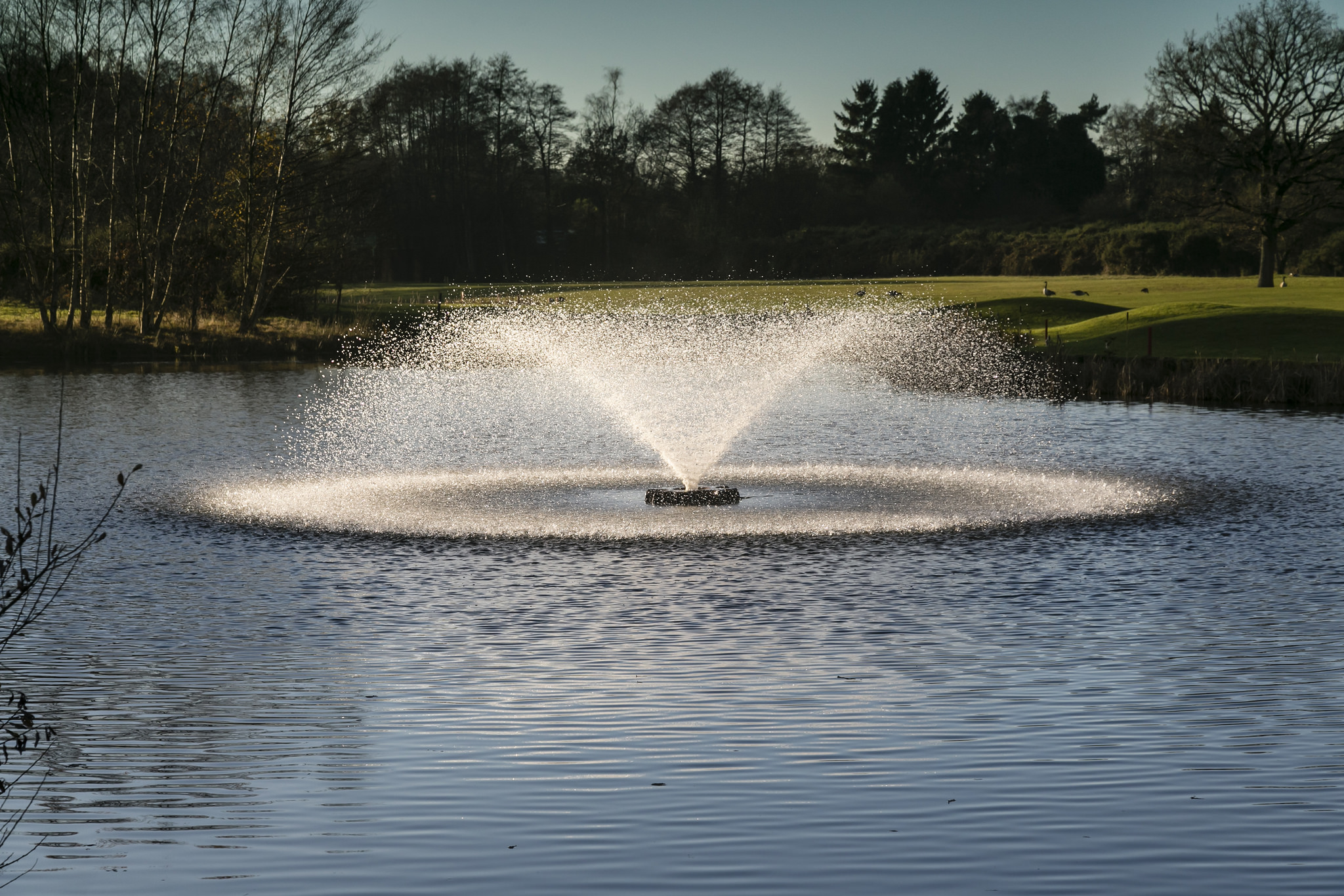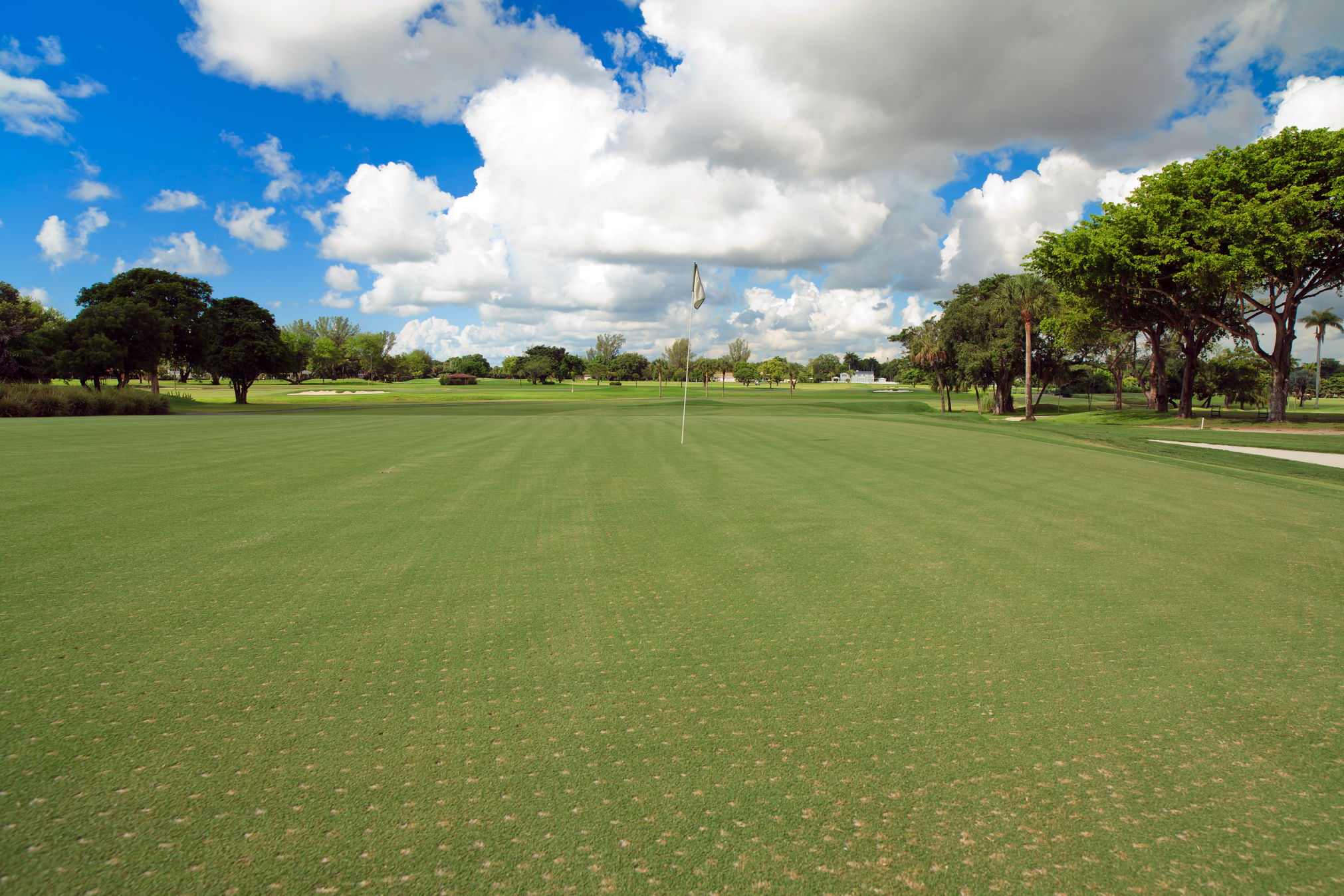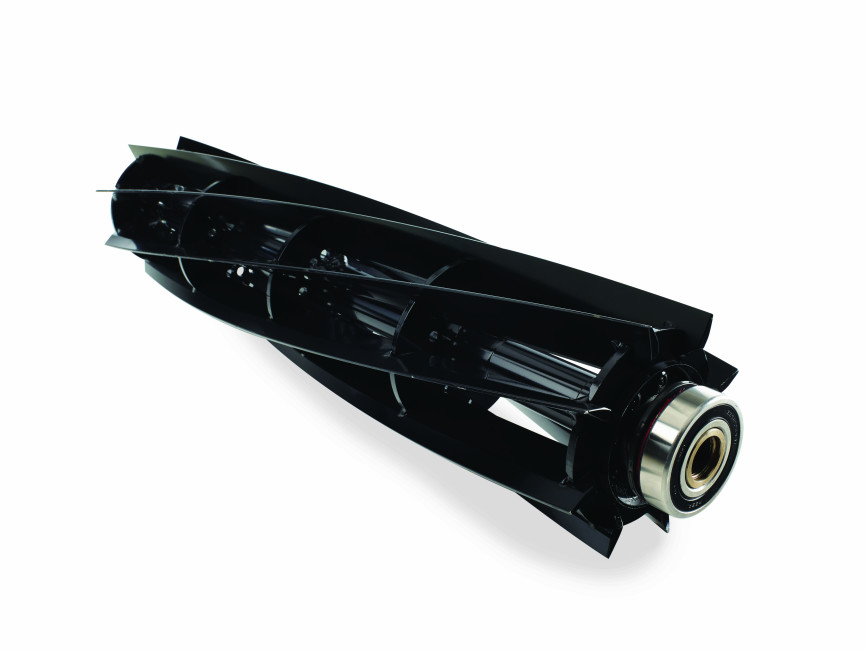- CONTACT US
- MOWERS
- VEHICLES
- APPLICATION
- Golf
- AERATORS
- VEHICLES
Cylinder maintenance
CONTENTS
FEATURED STORIES

Reesink Turfcare
Reading time: 10 minutes
Inside cylinder maintenance
In this article, Reesink's Peter Biddlecombe considers the cutting unit of a cylinder mower in particular, and the vital role good quality parts play in aiding this essential piece of one of the most important machines in your fleet.
Proper cylinder maintenance and cutting performance go hand in hand. That never changes. But what constitutes 'proper maintenance' can change over time as products and materials evolve.
It cannot be overstated that cylinder mowers are precision tools and it is essential that they be adjusted and operated with this in mind. Their performance depends on proper set-up and adjustment procedures. An error of .010 inch or .25 mm in height of cut, end-to-end, or from one cutting unit to another, can be visible as mismatch. Although there are design variations in cutting units, most require the same basic procedures - a surface plate, accurate height of cut tools and proper instruction are essential for setting up a cutting unit.
If a cylinder mower's unique characteristics are not understood and responded to, the end result will be a poor quality of cut and expensive downtime and repairs. But, when properly maintained and operated, cylinder mowers provide a superior - one could say the ultimate - quality of cut.
To maintain performance
Check daily
• Bedknife to cylinder adjustment (calibration)
• Edge sharpness
• Height of cut
Check periodically
• Roller condition
• Cylinder bearings
• Bedknife attitude
• Roller parallelism
• General mechanical condition
Calibration
For a cutting unit to perform well for the longest period of time without constantly being resharpened or readjusted, one thing is key: maintaining the parallelism between the bedknife and the cylinder. If those two components are sharpened, installed and working together properly, you'll get Toro's legendary performance from your cylinders for a long time.
Years ago, mechanics would set up the machines in the sheds and you'd hear that the greenkeepers would tighten up the units every third green or so. Sometimes you'd hear the cylinder screaming with noise because the cylinder is too tight against the bedknife. That's disappeared, they're not clicking on like that anymore.
If your bedknife is too close to the cylinder, not only does it wear the blade and cylinder down faster, but the mower needs more power to propel it along. More power needed means more fuel used and this is another cost on top of repair and more frequent replacement.
Check the distance of the cylinder to the bedknife and check that adjustment all the time, you don't want it too tight or too slack. There should be a light contact, just enough to get a couple of bits of paper in. Most maintenance teams will use a feeler gauge.
If it's too tight, you will be wearing the component down faster. This means that the hydraulic and engine management system will demand more horsepower because there's more resistance. Generating more power means you use up more fuel, so your fuel costs go up. The less contact you have, the less energy required from the power unit to drive them.
The same is true for electric-powered machines, of which there is an increasing number. With more friction, there is more demand on the lithium battery and it'll need more frequent charging.
Calibration should also be done with weather conditions in mind. You're setting your cutting unit up for 3mm, but it's been raining. The ground is softer so the cutting units will sink a little. Suddenly your bench set 3mm height of cut now has a lower effective height of cut.
This would also lean towards correct bedknife selection. There are various options available to assist with achieving the best effective height of cut to maintain consistent aftercut appearance throughout the year.
Backlapping
Backlapping is a quick and easy method to help maintain the sharpness of the cylinder and bedknife between grindings without having to remove the cylinder and bedbar.
Park your machine, turn it on, apply the desired lapping paste to the cylinder and set it to backlapping mode. The machine runs in reverse, the paste acts as a grinder and sharpens the blade.
It's always better to take the cylinder off and put it on a proper grinder and parallel the grinder to the cylinder, but backlapping is a quick way of maintaining sharpness between proper grinding. Backlapping only takes about 5-10 minutes. If you need to do it for longer you should really get it on a proper grinder.
Frequency and regularity are hard to define as one size won't fit all machines, uses and conditions. For those customers who are doing around 400 hours, and where we do filter and bedknife changes on a greens and fairway mower, we will complete two regrinds a year on the greens equipment and one regrind on the fairway machinery. We would normally complete grinding over the winter period before the new growth arrives in the spring, and another greens grind mid-season. Any extra sharpening in between can be done by backlapping.
Cylinders
When a set of units come in, we do a full strip-down and clean. We check how much wear there is on the cylinder. Generally, a five-inch cylinder has a wear limit of 4.5 inches in diameter before you need to replace them. If you look after them, you'll get five years out of them, but again, it depends on the operating conditions and hours of use.
Most greenkeepers will do the maintenance because they'll soon see the knock-on effects on the course if they don't.
Cleaning
You cannot clean enough.
Keeping the kit clean and debris-free is essential and most units should be washed off every day after cutting to ensure the cylinder and the bed knife has a nice clean surface to cut that grass. Grass, mud, twigs, sand, topdressing, litter. It is important to make sure the cutting surfaces, as well as axles and other moving parts, are clean and clear.
And, with worm casts having re-emerged as a problem for greenkeepers, there's even more emphasis to do a regular and thorough job. Worm casts are like a gritty paste, which wears everything down and blunts everything. Until recently there was a chemical that all grounds and greenkeepers used to suppress worm casts. It was banned three or four years ago so we've seen a lot more worm casts with greenkeepers having to implement new processes to tackle them, such as brushing the fairways, blowing them, etc.
Rotary mowers
I should also remind you that, while cylinder mowers are essential for pristine putting greens, we shouldn't forget the role of the rotary.
Blades need to be checked for sharpness. If they're not, if they're dull or blunt, they might knock the leaf of the grass down, and not be a clean cut; it might be a tear. A tear generally promotes disease which is another problem for the greenkeeper.
Whilst the cylinder mower may offer surgical precision, there are still choices and settings when it comes to the rotary mower and these need to be checked and maintained.
You can choose a high sail blade to get rid of clippings quicker or a mulching blade to keep cuttings in the chamber longer. What works on one course might not work on another.
There's a little less maintenance to do on a rotary mower, but you still have to clean the deck, sharpen the blade, and check all support roller bearings.
Dealers and service managers
Even the highest-quality components, such as EdgeMax bedknives and EdgeSeries cylinders, won't make a difference without proper setup and maintenance. That's why it's so important for those caring for the machines to have the latest recommendations. That's the reassurance you get from working with a manufacturer's official service dealer. Whilst others may be able to fix things for less because they have lower overheads and use non-brand aftermarket parts, manufacturers know they have to deliver a higher level of quality and show the value of that - customer service, part quality, increased lifespan and access to the specific manufacturer's network.
Official dealers have access to the knowledge and expertise of the manufacturer. As explained, the cutting unit has a lot of elements, from spacers and bearings to bushes and blades, and official dealers will be able to diagnose problems before they happen and prescribe the best parts for a long and happy life. For example, Toro EdgeMax bedknives and EdgeSeries cylinders are made of a harder material that calls for slight nuances in how these products should be ground and sharpened. That sort of knowledge really helps when providing the best possible level of service and maintenance.
In the case of Toro, not only are we able to access such information from Toro, but we're constantly learning from the field. When we find a better way to do something, we share it because we want to help our customers get the most out of their equipment investment. As a result, even technicians who have been using the same procedures for a long time may pick up new tips that help improve mower performance.
Our service managers liaise with customers to assess what needs to be done and let them know what we find as we work. We don't just respond to specific requests, we discuss any issues we come across as we work.
For those customers who are part of our ReeAssure scheme, we always use Genuine Toro Parts, for example, bearings. Our local bearing company has three options: lower, medium and higher quality. We know that others use poorer quality bearings to stay competitive on price. They save a bit of money for their customers but it's not effective in the long run. Experience proves this: non-Toro parts come straight back to us.
By spending time on regular cleaning, calibration, paralleling and sharpening, greenkeepers avoid the larger and more expensive problems of neglect that build over the long term: poor cut, unhealthy grass, expensive repairs and replacement. And, when doing repairs, spending a little more on premium, genuine parts, owners ensure the best performance of their machines. Cheaper aftermarket parts may save a few pounds upfront, but the chances are you'll be buying another one far sooner than a premium part. And there's always the chance that that part may even damage other parts of the machine.
Reesink UK LTD | 1-3 Station Road, St Neots PE19 1QF | Registered in England
Reesink UK LTD is authorised and regulated by the Financial Conduct Authority.















































































